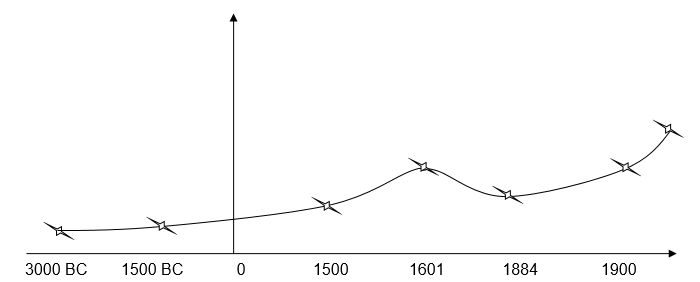Many ancient cultures considered red lips as an important aspect of a woman’s beauty (Pallingston 357). As such, the desire and pursuit of beauty led to the invention of what is commonly called lipsticks today. The ancient Mesopotamian women invented and wore lipsticks around 3000-1500 BCE. Historically, they are the first users of lipsticks. It is worth noting, “Egyptian women also wore lipsticks” at around the same period (Pallingston 357). The modern lipstick is a result of many years of the scientific revolution of the first crude ones. This revolution process can be broken down into a historical timeline of more than 5000 years.
3000-1500 BCE
During this period, two main ancient civilizations used lipsticks. The first wing of this civilization was the Mesopotamian women living in the Indus Valley. They crushed semi-precious jewels and wore on their lips to improve their facial beauty. Egyptian women, on the other hand, used a purplish-red dye taken from seaweeds. The weeds contained iodine and bromide, which was responsible for many cases of illness among women. Cleopatra, a renowned Egyptian stylist of the time, made her lipsticks from crushed carmine beetles and ants.
THE 16TH Century (1501-1600)
It was during the 16th century that lipstick became widely used. Queen Elizabeth (I) popularized the use of blackened lips, which was widely imitated (Pallingston 358). During this period, lipsticks were associated with the high social class and male actors. However, the popularity of lipsticks was not long-lived as Queen Victoria, who ascended to the throne of England, banished it. Over the years that followed, lipsticks became associated with prostitutes and film actors. In fact, it is during this period that the phrase “the devil’s candy” was coined in reference to stained lips. It is the film actors who slowly but steadily influenced people to wear lipsticks again (358).
17TH -19TH Century (1601-1884)
The beginning of the 17th century witnessed an increase in the number of women wearing lipsticks. This rise in popularity was due to the influence of actors in the silent films who wore black lipsticks. The lipstick industry completely changed in 1884 when French perfumers produced the first modern lipsticks. The lipsticks, made with castor oil, deer tallow, and beeswax, became more and more popular. (Pallingston 358).
20TH Century to Date
The 20th century witnessed the highest number of lipstick users than ever as many women abandoned the socially conservative attitude towards it. The invention of the first push-up lipstick tubes took place around the same period. Producers, especially in the US, started producing a variety of colors like bright red, dark lilac, and light pink. Modern lipsticks are made from oils, waxes, chemical dyes, and supplements such as moisturizers, lip-gloss, and sunscreen (Emsley 98).
Timeline Table.
Table contents are a summary of discussed lipstick history.

In conclusion, we can say that women, and a section of men, have fully accepted the use of lipsticks. Today, lipsticks are the “most widely used make-up by women across all races, social classes, and religions” (Emsley 241). It is no longer a matter of morality or cultural practice, but an integral part of beauty.
Works cited
Emsley, John. Vanity, vitality, and virility: the science behind the products you love to buy. New York: Oxford University Press, 2004. Print.
Pallingston, Jessica. Lipstick. St. Martin’s Press, 1998. Print.